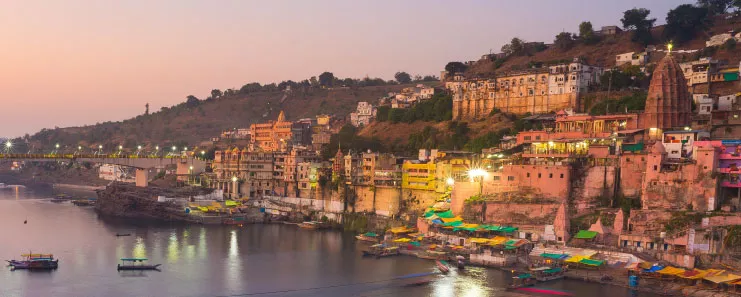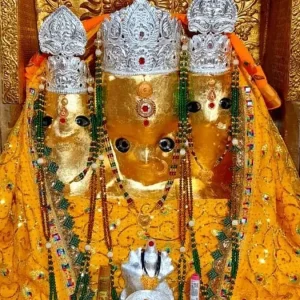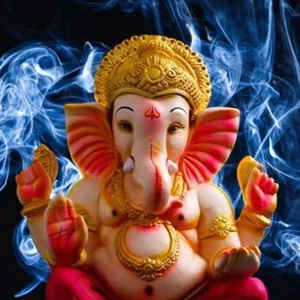
Jyotirlingas are sacred shrines of Lord Shiva; it is believed that Lord Shiva himself visited these places and hence they have a special place in the hearts of devotees. There are 12 of them in India.
Jyotirlinga means ‘column or pillar of light’. The ‘stambha’ symbol represents that there is no beginning or end.
When Lord Brahma and Lord Vishnu had an argument about who was the supreme god, Lord Shiva appeared as a column of light and asked each one to find the ends. Neither could do it. It is believed that the places where these columns of light fell is where the jyotirlingas are located.
Of the 12 jyotirlingas, Omkareshwar Jyotirlinga is believed to house a jyotirlinga that is split between two temples – Omkareshwar and Amareshwar.
Omkareshwar means ‘Lord of Omkara or the Om sound’ and Amareshwar means ‘Lord of the Immortal’.
Where is the Omkareshwar Jyotirlinga located?
It is located on an island called Mandhata or Shivapuri on the Narmada River in the Khandwa district in Madhya Pradesh.
Special features of Omkareshwar Temple
The temple has a large prayer hall with about 60 huge and elaborately carved stone pillars supporting it. It is a five storied structure with each floor having a different deity. Above the Omkareshwar linga is the Mahakaleshwar temple. Sidhnath, Gupteshwar and Dhwajeshwar temples are on the third, fourth and fifth floors respectively.
The temple also boasts of several lofty spires.
History of Omkareshwar Jyotirlinga
The Puranas mention this sacred spot as an inhabited and spiritual place.
The aboriginal Bhil chieftains ruled Omkareshwar under the rule of the Parmar rulers of Malwa; this was from 10-13th AD and then by Chauhan Rajputs. The Marathas took over in the 18th century AD when many temples were built and renovated.
What is the story behind Omkareshwar Jyotirlinga?
One legend says that two sons of emperor Mandhata of the Ikshvaku dynasty performed severe austerities and pleased Lord Shiva because of which the mountain is called Mandhata Mountain. And Lord Shiva manifested himself as a jyotirlinga.
Another legend says that Vindhya Parvat prayed to Lord Shiva performing severe penance to make the Vindhyas, His abode. Some say it was to become taller than Mount Meru. Lord Shiva was pleased with the penance and granted his wish by appearing as a jyotirlinga there.
At the behest of the gods and sages, Lord Shiva split the linga into two parts – one is at Omkareshwar and the other at Amareshwar or Mamleshwar. Therefore, devotees visit both these temples when they visit Mandhata.
It is said that Lord Shiva also allowed the Vindhyas to grow but only as long as he did not trouble the pilgrims. However, over time, Vindhya Parvat’s massiveness did cause problems for the devotees and so they sought sage Agastya’s help. The sage ordered the mountain to stop growing until he returned to it, which he never did, and hence he solved the devotees’ problem.
Interesting facts about Omkareshwar Jyotirlinga
- There are two Shiva temples situated near each other, both of which are famous pilgrimage spots for devotees – Amareshwar Jyotirlinga on the mainland and Omkareshwar on an island.
- It is said that Mandhata Island, on which Omkareshwar Jyotirlinga is situated, is in the shape of the sacred Om (ॐ) symbol.
- There are shrines to Panchamukhi Ganesha, and Annapoorani housed within this temple.
While devotees visit this temple throughout the year, it would be best to visit it in the winter months i.e. October to March. Visiting it during Mahashivratri (February 21st this year) would be the ultimate treat for any devotee!





